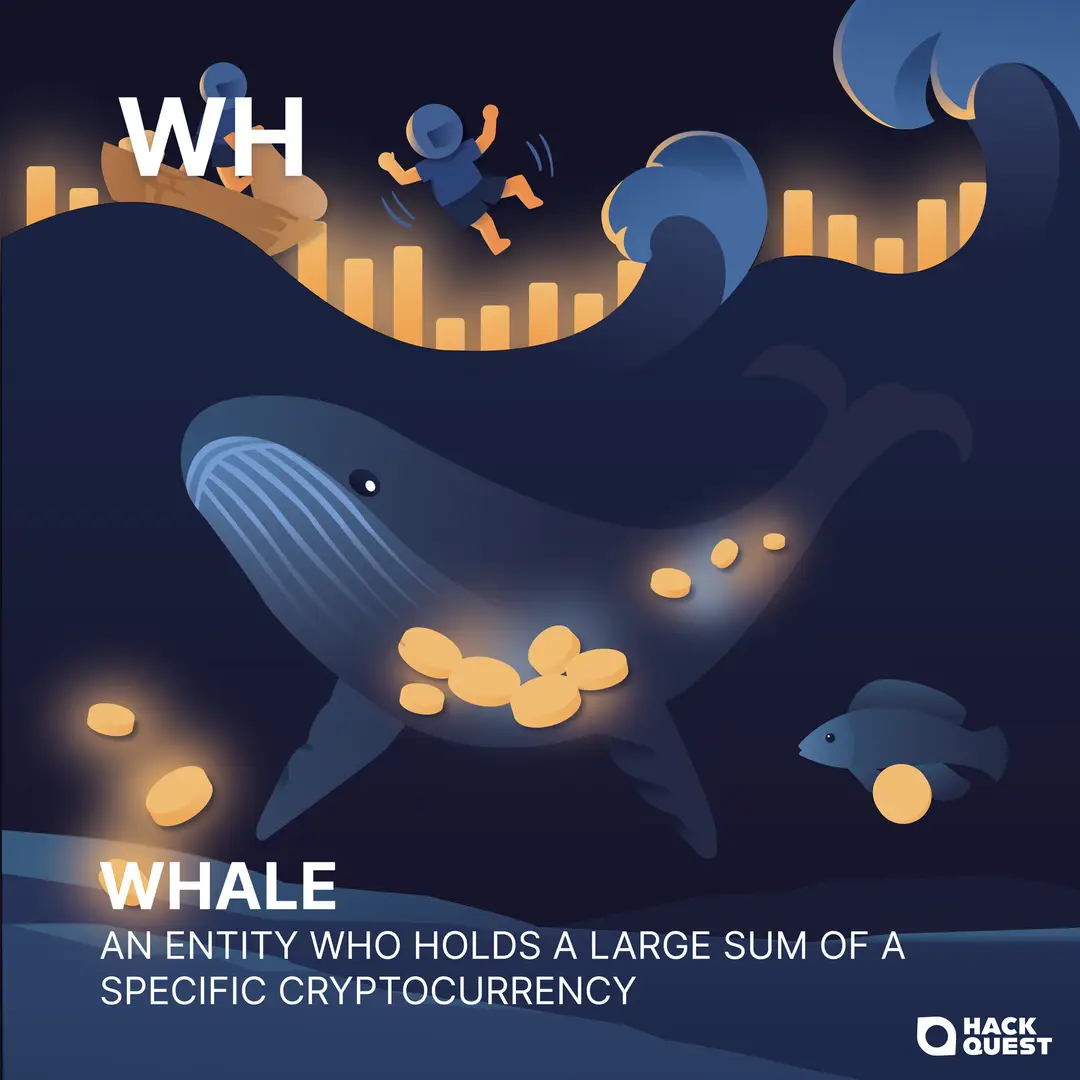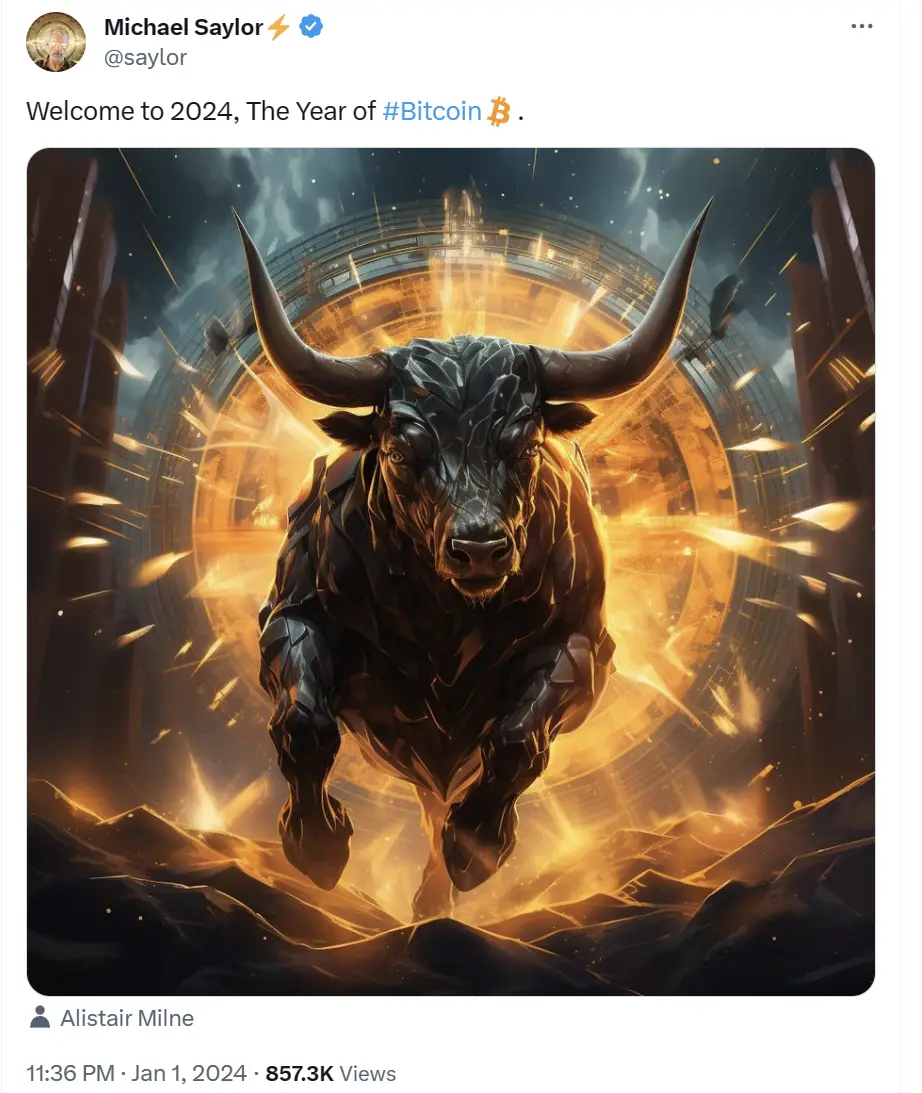Back
Whale
Slang
By HackQuest
Apr 2,20245 min readWelcome to the world of Web3, where cryptocurrencies, blockchain, and a unique culture converge. Entering the world of Web3 can be both thrilling and overwhelming, especially when faced with the seemingly cryptic language used by enthusiasts. Don't worry if you feel they sound like some secret codes, we are here to unravel their meaning in Web3 context. In this article, we are going to introduce [WHALE].

What is the meaning of WHALE?
Irrelevant to marine biology 🐳, in the crypto context, a WHALE refers to an individual or entity that holds a substantial amount of a particular cryptocurrency. These entities are often characterized by their significant influence on the market due to the sheer volume of assets they control. In simpler terms, a WHALE is a big fish in the cryptocurrency ocean.
🐳
Some of the publicly-known crypto holders with large amounts of cryptocurrency are Tyler and Cameron Winklevoss (Founders of Gemini), Michael Saylor (CEO of MicroStrategy), and Brian Armstrong (CEO of Coinbase).
The origin of WHALE
The term "WHALE" originates from traditional financial markets and is first used to describe Bruno Iksil, known as the "London Whale," was a French trader at JPMorgan Chase & Co. He gained notoriety for his significant role in a trading scandal that resulted in a $6.2 billion loss for the firm. A"whale" refers to a big player with considerable financial clout. In the crypto space, the term stuck and gained popularity as a way to describe entities with the power to impact market trends due to their substantial cryptocurrency holdings. Satoshi Nakamoto is the top crypto WHALES now, The pseudonymous creator of Bitcoin is estimated to hold around 1.1 million BTC.
How to Identify the WHALE
Large Holdings
Whales are recognized by the vast amounts of a specific cryptocurrency they possess. This could be millions or even billions of dollars worth of a particular coin.
Market Influence
The actions of WHALEs can influence market prices. For example, An 8,000 BTC sale by Nobuaki Kobayashi on January 17, 2018, led to a 10.8% drop in Bitcoin's price from the time of sale. However, like the previous instance, the market recovered by the end of the day.

Address Tracking
Cryptocurrencies operate on decentralized blockchain networks. Enthusiasts can track the wallets of major holders, often referred to as WHALE addresses, using blockchain explorers.
The Influence of the WHALE
Strategic Decision-Making
WHALE's decisions can influence the overall direction of a cryptocurrency. Their buying or selling patterns might be indicative of larger trends within the market.
Community Attention
The crypto community often closely monitors the actions of WHALEs. This attention is driven by the belief that WHALEs possess insider knowledge or have the ability to predict market trends. Crypto markets are highly driven by narratives and attention, top KOLs and WHALEs such as Elon Musk to $DOGE and Michael Saylor to $BTC have a significant impact on the pricing of such assets. Sometimes, KOLs and Whales will also “SHILL” projects that they have large holdings, influencing market prices.
🚀
On January 29, 2021, Elon Musk changed his Twitter bio to “Bitcoin,” which led to an immediate rise in Bitcoin's price from about $32,000 to $38,000. (Lennart Ante. How Elon Musk's Twitter activity moves cryptocurrency markets. In Technological Forecasting and Social Change)

Conclusion
In the context of Web3, "WHALES" are influential players who possess substantial amounts of cryptocurrency or digital assets, giving them significant power and influence over the market. Their actions, whether buying, selling, or holding, can have profound impacts on the value and stability of digital currencies and assets within the Web3 ecosystem. By understanding what it stands for, you’re better equipped to make informed decisions in the cryptocurrency market. Happy investing, and may your crypto journey be as informed as it is exciting!
If you would like to learn more about such Web3 slang, let’s explore more in our HackQuest Web3 Glossary!